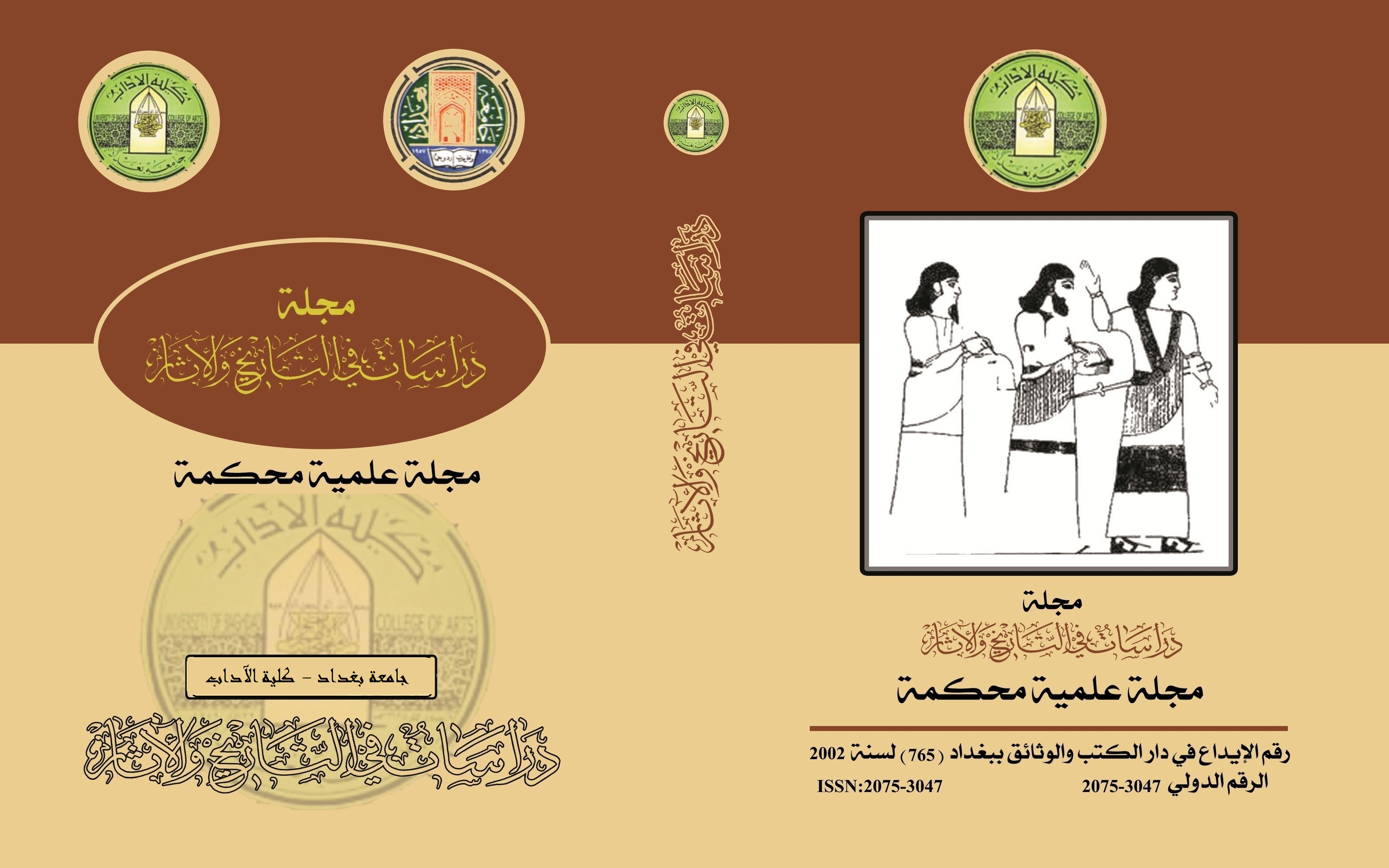Baraka Khan and his political and social role in the land of Qafjaq
Keywords:
Berka Khan, Qafjak Khanate, Mongols, Russia, Golden HordeAbstract
This research aims to highlight the role of Prince Barakah Khan bin Jogi Khan bin Genghis Khan, Prince of the Golden Horde, in extending political influence and expanding his rule over the Qafjak Khanate and the Mongolian contact with the Mamluks of Egypt socially, as Barakat Khan had converted to Islam and by his entry into Islam paved the way for the sons of his tribe to enter him .
The country of the Qafjaq was transformed during the reign of the prince into a private khanate alone belonging to the Ilkhanen kingdom, and the Emir of the Golden Horde and after him ruled in the tributaries of the regions that were adjacent to the Qafjak extending from parts of Russia to the Gulf of Finland and to the west from within Poland, and their rule lasted about two centuries for the period (636-886 AH) / 1240-1502AD).
In addition to the political and social system, the role of Birka Khan in the economic system was prominent and the interest in the lands acquired by the Mongols in the southern Russian plains. And in addition to the trade that was common to them, trade exchange is done largely with the city of Saray, and it is done by bringing in commercial goods such as silk, spices and others.
References
• ابرار كريم الله. (1994). من هم التتار. مصر: الهيئة المصرية للكتاب.
• ابن خلدون. (1988). العبر وديوان المبتدأ والخبر (المجلد ط2). بيروت: دار الفكر.
• ابو الفداء. (ن ت). تقويم البلدان. بيروت: دار صادر.
• ابي العباس احمد القلشندي. (1914). صبح الاعشى في صناعة الانشا. القاهرة: المطبعة الاميرية.
• احمد بن علي القلقشندي. (1985). ماثر الانافة في معالم الخلافة (المجلد ط2). الكويت: مطبعة حكومة الكويت.
• احمد حمدي الحافظ. (1949). الدوله الخوارزمية والمغول . القاهرة: دار الفكر.
• اسماعيل عبد العزيز الخالدي. (1404هـ). العالم الاسلامي والغزو المغولي. الكويت: مكتبة الفلاح.
• اقبال عباس. (ب ت). تاريخ ايران قبل الاسلام. القاهرة: دار الثقافة للنشر والتوزيع.
• الذهبي. (1985). دول الاسلام. لبنان: مؤسسة العلمي للطباعة.
• الرمزي. (1908). تلفيق الاخبار وتلقيح الاثار في وقائع قزان وبلغار وملوك التتار. ب م: الكريمية الحسينية.
• السيد الباز العريني. (1986). المغول. بيروت: دار النهضه العربية.
• السيوطي. (1965). تاريخ الخلفاء. بيروت: وزارة الثقافة والشؤون الدينية.
• المؤسسة العربية. (1999). السعودية: مؤسسة اعمال المؤسسة للنشر والتوزيع.
• بارتولد. (ب ت). تاريخ الترك في اسيا الوسطى. ب م.
• تقي الدين ابي احمد المقريزي. (1997). السلوك لمعرفة دول الملوك. بيروت: دار الكتب العلمية.
• ثروت عكاشة . (1992). اعصار من الشرق. ب م: دار الشرق.
• جمال الدين ابي المحاسن ابن تغري بردي. (1992). النجزم الزاهرة في ملوك مصر والقاهرة. بيروت: دار الكتب العلمية.
• رجب محمود بخيت. (2010). تاريخ المغول وسقوط بغداد. بيروت: مكتبة الايمان.
• رزق الله منقوريوس الصوفي. (1908). تاريخ دول الاسلام. مصر: مطبعة الهلال.
• رشيد الدين. (ب ت). جامع التواريخ. (محمد صادق نشأت واخرون، المترجمون) القاهرة: دار احياء الكتب العربية.
• ركن الدين بيبرس الدويدار. (1998). زبدة الفكرة. بيروت: الشركة المتحدة للتوزيع.
• سارة مسعود السيد. (2017). عصر بركة خان سلطان مغول القفجاق للفترة (600-665هـ/1257-1266م)، رسالة ماجستير. عين شمس: كلية البنات للآداب والعلوم التربوية.
• ساهر رافع. (ب ت). جنكيز خان. الجيزة: دار طيبة.
• سعيد عبد الفتاح عاشور. (1972). مصر والشام في عصر الايوبيين. بيروت: دار النهضة العربية.
• سلوى رشيد. (1415هـ). التاريخ السياسي والعسكري للدولة المملوكية في عهد الظاهر بيبرس. دمشق: جامعة دمشق كلية الاداب.
• طقوش. (2007). تاريخ مغول القبيلة الذهبية والهند. بيروت: دار النفائس للطباعة والنشر.
• عبد الرحمن بن صالح المحمود. (1995). موقف ابن تيمية من الاشاعرة. الرياض: مكتبة الرشيد.
• عبد السلام فهمي. (1980). تاريخ الدولة المغولية في ايران. القاهرة: دار المعارف.
• عبد الكريم النجار. (2011). امبراطورية المغول دراسة في تكوينها وصراع الاسرة الحاكمة على منصب الخان الاعظم. ب م: مجلة اداب الرافدين.
• علاء الدين عطا مالك الجويني. (2007). تارخ فاتح العالم. (محمد السباعي، المترجمون) ب م: المركز القومي للترجمة.
• علي محمد الصلابي. (2009). المغول التتار بين الانتشار والانكسار. القاهرة: دار الاندلس الجديدة.
• عماد الدين ابو الفداء اسماعيل ابن كثير. (1988). البداية والنهاية. ب م: دار احياء التراث العربي.
• فاسيلي فلاديمير بارتولد. (ب ت). تاريخ الترك في اسيا الوسطى. (احمد سعيد، المترجمون) مصر: مكتبة الانجلو المصرية.
• فضل الله العمري. (ب ت). مسالك الابصار في ممالك الامصار. بيروت: دار الكتب العلمية.
• فؤاد عبد المعطي الصياد. (1970). المغول في التاريخ. بيروت: دار النهضة العربية للطباعة.
• قاسم عبدة. (1994). عصر سلاطين المماليك. القاهرة: دار الشروق.
• قطب الدين ابو الفتح موسى اليونيني. (1992). ذيل مراة الزمان. القاهرة: دار الكتاب الاسلامي.
• محمد سهيل طقوش. (2007). تاريخ مغول القبيلة الذهبية والهند. بيروت: دار النفائس للطباعة والنشر.
• محمد بن احمد النسوي. (1953). سيرة السلطان جلال الدين منكبرتي. القاهرة: دار الفكر العربي.
• محمد عبدالله ابن بطوطة. (1322هـ). تحفة الانظار في غرائب الامصار وعجائب الاسفار. مصر: المطبعة الخيرية.
• محمد علي البار. (2008). كيف اسلم المغول. بيروت: دار الفتح للدراسات والنشر.
• محمود سعيد عمران. (ب ت). المغول في اوربا. الاسكندرية: دار المعرفة الجامعية.
• محمود سعيد عمران. (ب ت). المغول واوربا. الاسكندرية: دار المعرقة الجامعية.
• منير البعلبكي. (2020). دول البلطيق. منشور في الشبكة الدولية(الانترنيت).
• هاورلدلام. (1962). جنكيز خان وجحافل المغول. (متري امين، المترجمون) القاهرة: ب ن.
• هوتسما ابن البيبي. (ب ت). اخبار سلاجقة الروم.
• ياقوت الحموي. (1993). معجم البلدان. مصر: مطبعة السعادة.
• المراجع
• Martine. (2006). north East Russia and the Golden horde. Cambridge: earlyrusto, university.
• Denis r, s. (1999). the mongols in the west, jouynal of Asian history.
• Henry , H. (1880). History of the mangols. landon.
• Howarthl. (n.d.). the history of the mongol.
• Mark, C. (2002). Land and Privilege in Byzantiu. Cambridge univarsity.
• stvan, v. (2005). cumans and tatars oriental militarl military in pre ottoman baikans. Cambrnidge uninversity press.
• Uegungeonuon. (2001). history of the mongo the mongo the life and times of ghinggis kan cuyzon land and neewyork.
Downloads
Published
Issue
Section
License

This work is licensed under a Creative Commons Attribution 4.0 International License.
Copyright and Licensing:
For all articles published in Journal of Studies in History and Archeology, copyright is retained by the authors. Articles are licensed under an open access Creative Commons CC BY 4.0 license, meaning that anyone may download and read the paper for free. In addition, the article may be reused and quoted provided that the original published version is cited. These conditions allow for maximum use and exposure of the work.
Reproducing Published Material from other Publishers: It is absolutely essential that authors obtain permission to reproduce any published material (figures, schemes, tables or any extract of a text) which does not fall into the public domain, or for which they do not hold the copyright. Permission should be requested by the authors from the copyrightholder (usually the Publisher, please refer to the imprint of the individual publications to identify the copyrightholder).
Permission is required for: Your own works published by other Publishers and for which you did not retain copyright.
Substantial extracts from anyones' works or a series of works.
Use of Tables, Graphs, Charts, Schemes and Artworks if they are unaltered or slightly modified.
Photographs for which you do not hold copyright.
Permission is not required for: Reconstruction of your own table with data already published elsewhere. Please notice that in this case you must cite the source of the data in the form of either "Data from..." or "Adapted from...".
Reasonably short quotes are considered fair use and therefore do not require permission.
Graphs, Charts, Schemes and Artworks that are completely redrawn by the authors and significantly changed beyond recognition do not require permission.
Obtaining Permission
In order to avoid unnecessary delays in the publication process, you should start obtaining permissions as early as possible. If in any doubt about the copyright, apply for permission. Al-Adab Journal cannot publish material from other publications without permission.
The copyright holder may give you instructions on the form of acknowledgement to be followed; otherwise follow the style: "Reproduced with permission from [author], [book/journal title]; published by [publisher], [year].' at the end of the caption of the Table, Figure or Scheme.



















